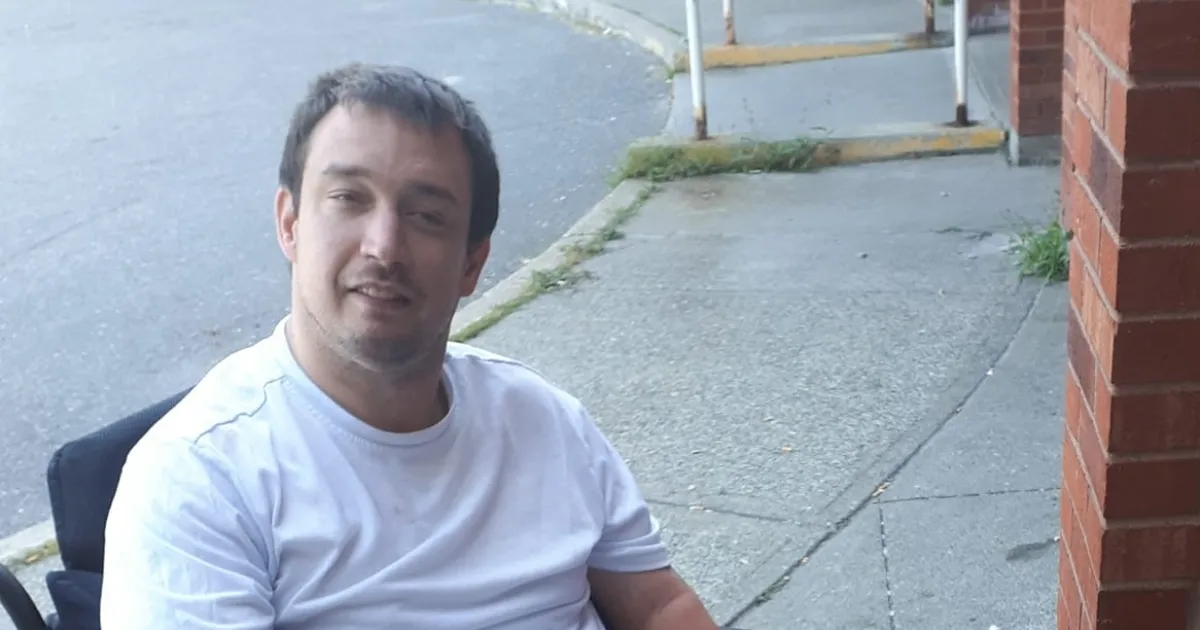Pride in Disability Identity
By Stephen C. Barns, Disability Culture Consultant
I have been reflecting on what it means to be a citizen with disabilities in Canada. There has also been a lot of reflection on what it means to be Canadian as a whole.
I was born with poor vision, a neurodivergent brain, and a visible physical disability—Cerebral Palsy. My primary income source is the Ontario Disability Support Program (ODSP).
I’ve been receiving ODSP for 21 years, and I believed relying on it would only be temporary—just like other things in life that are temporary. Needless to say, it hasn’t been temporary.
I am just one of the 27% of the 7 to 9 million citizens across this True North who identify as members of the disability community, living in a small town in northeastern Ontario.
Ontario’s disability community includes approximately 1.6 to 1.9 million people. I share this to make it clear: I am one individual, one human, with personal and professional experiences that inform my beliefs. I cannot speak for all citizens.
But I will share my story and my lived experiences, in hopes that others in the disability community—whether their disabilities are visible or invisible, physical or related to mental health, addictions, born or acquired, single or multiple diagnoses—can relate.
As the elections have passed, I find myself asking: Why, in 2025—and even with National Accessibility Week (May 26–29, 2025) having just passed—was our community, our history, and the culture that grew from it given little more than a passing mention in mainstream media? Whether it’s in the U.S. election, the Ontario provincial election, or the Canadian federal election, we are still not meaningfully included.
Ontario’s Premier, Doug Ford, only announced at the end of May 2025 that his government would not claw back the Canada Disability Benefit (CDB), unlike Alberta’s Premier Danielle Smith, who decided her government would.
There was very little discussion about the CDB during the federal election. There was talk of affordability, but in my view, the disability community was not brought into that conversation.
There was also talk of housing, but again, almost nothing about accessible housing. As if young to middle-aged Canadians with disabilities don’t dream of owning their own homes, cottage properties, or becoming their own bosses.
The CDB could have been the beginning of helping individuals escape toxic situations before they lost hope. I believe, upon reflection, that I lost hope for far too long.
I became someone I didn’t like. I searched for employment and educational opportunities, but with the rising cost of living and life in general, I felt more and more trapped on a treadmill—always running, never getting anywhere.
If the CDB had existed 20 years ago, I believe I could have paid off my credit faster. And honestly, for someone on ODSP, I got approved for credit way too easily.
My plan was to go to film school, get a part-time job, buy a computer and video camera, and build my skills. I wanted to get away from my living situation and create a life.
But life had other plans—plans shaped by disability and finances. Traditional education wasn’t an option. Maybe I could’ve used credit cards to buy equipment, but even one average piece of equipment was out of reach unless I maxed out my cards right away.
Living 40% below Canada’s poverty line, with no progress in employment or even volunteer options, I continued to feel trapped on that treadmill. I didn’t reach my goals.
The CDB could have helped—not just me, but many others. If it had started 20 years ago with a $200 benefit indexed to inflation every year or two, it might have actually addressed the cost of living and empowered our community to pursue opportunities that others take for granted.
Without addressing accessible, geared-to-income rents (AGIR), though, the CDB just puts a Band-Aid on a bullet wound.
I believe our community is 30 to 40 years behind where we deserve to be. We must use our power to demand more financial accessibility. The current CDB—$200 in 2025—is, in my opinion, a metaphorical slap in the face. That amount might have meant something 20 years ago, but today it feels insulting.
We still see an estimated 40–50% of the homeless population identifying as members of the disability community. The solution is not to house them in institutions—whether that means forced treatment, jails, nursing homes, or hospitals—regardless of how those institutions are disguised. But that’s what Ontario appears to want.
The federal government must ensure accessibility to the CDB, and all provincial and territorial governments—including Alberta—must commit to not clawing it back, as Alberta currently plans to.
I’ll leave readers with this: Now, more than ever, our community needs to take pride in being members of the disability community. I’ll admit—it’s hard to wrap my head around the fact that we are still just expected to “exist.” I can’t go to my ODSP worker and say, “I need more money to live.” But what makes me different from everyone else surviving on the slave wages of ODSP?
The average person on social assistance can’t get a traditional loan to buy a home, or start a business, or create their own future.
I’ve heard people say that families should help their relatives with disabilities. Maybe, in a perfect world, that’s possible—but that’s assuming a lot. We have a right to build our own identities. We aren’t born with all our skills—we develop them. We shape who we are.
We are not always given the right to exist—but we must take pride in being part of the most diverse group in Canada.
We must be truly strong and free.
Thank you for your time.
